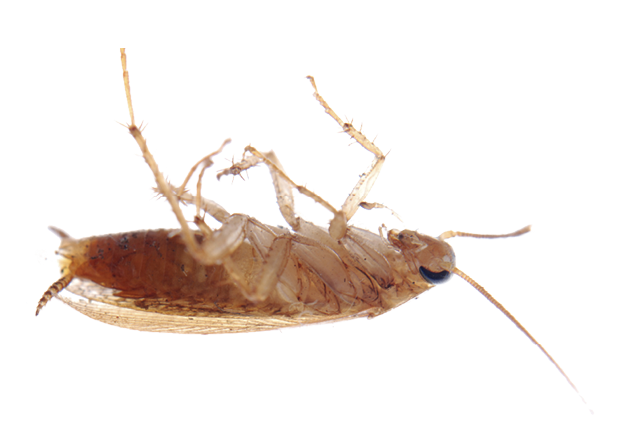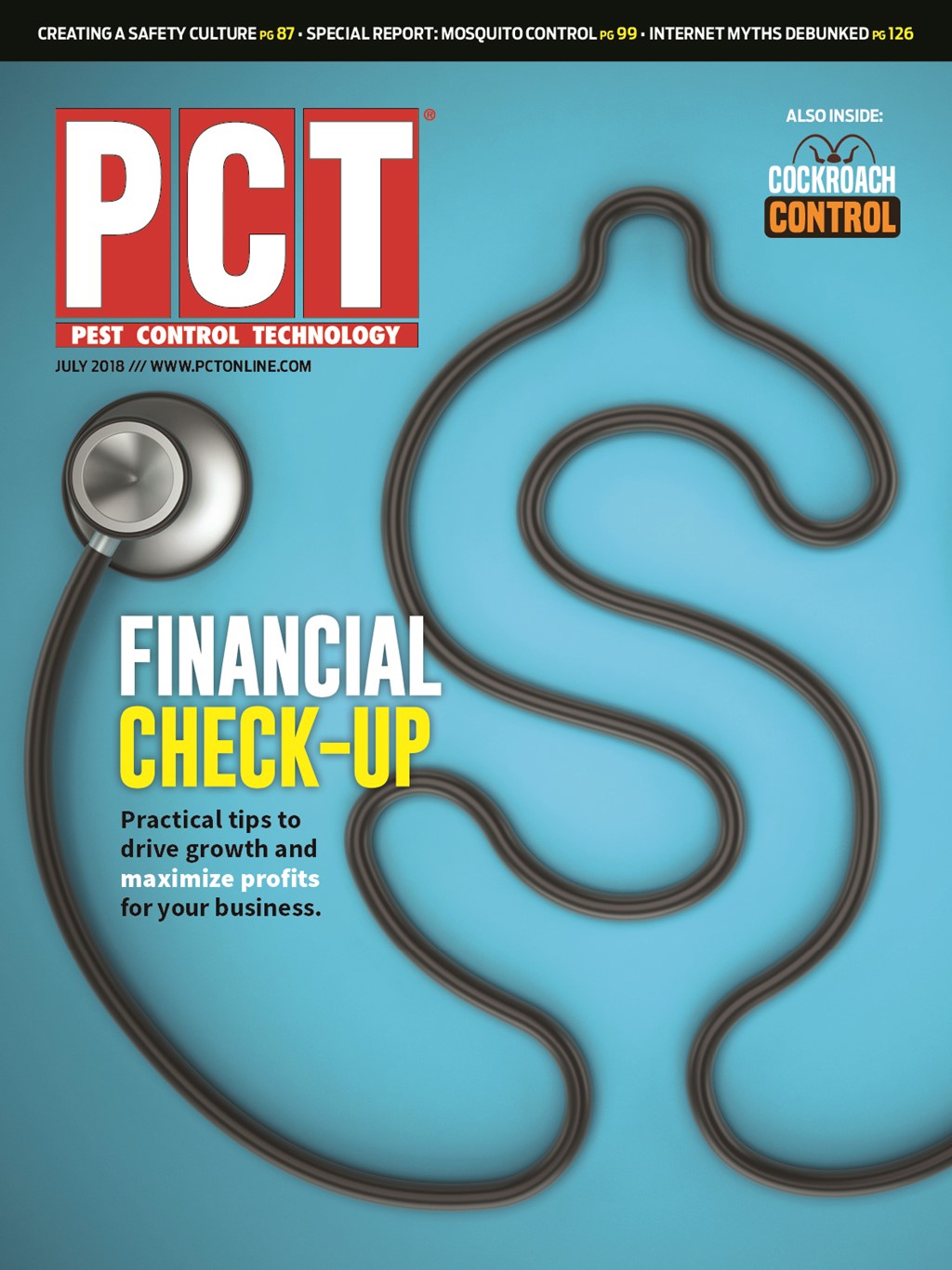
Editor’s note: This article originally appeared in the Spring 2017 edition of PCT Canada.
1. Find the hot spots.
An overlooked roach population will prevent you from gaining control and may spread to neighbouring businesses or apartment units. To find the source, conduct thorough inspections. That means lifting drain lids, pulling items and appliances away from walls, arming yourself with a screwdriver and a good flashlight, and having a good look around, said Todd Summers, owner of Barrier Pest Control in Bradford, Ontario. To see what may be lurking in mixers, espresso machines, cash registers and other equipment, apply a flushing agent and take apart and clean motor housings if necessary, added the 40-year industry veteran.
2. Monitor more.
Effective management “is based on a lot of diagnostics,” said Joe Barile, technical service lead, Bayer Environmental Science Unit. Count how many monitors you’re using and double that number as “the information you gather from that effort is just incredibly valuable,” he said.
Continuous monitoring tells you where introductions are coming in so you can jump on them before a population gets established, added Ron Harrison, director of technical services at Rollins. Research shows in most cases that “genetic relatedness is extremely high between cockroaches in a single building.” That reinforces the importance of monitoring as one introduction could be the cause for a building-wide infestation.
3. Teach prevention.
Clients aren’t pest experts and don’t understand how their actions may be exacerbating the problem. Educating them on this falls to the PMP and may include how to conduct proper housekeeping and sanitation, that it’s okay to report cockroach problems or throw out infested food items, and how ignoring the problem can have health consequences or cause economic problems for others, said Gilles Lambert, president of Gilles Lambert Pest Control Services in Winnipeg.
4. Communicate better.
To educate stakeholders and get insights on pest activity (tenants and employees are your best source of intel), open communication is essential. But there are “a lot of communication problems going on,” many stemming from cultural differences and language barriers, said Lambert.
Like the United States, Canada is a diverse country and “we’re going to have to get better at (communicating) because there’s different languages coming in all the time,” he said.
To bridge this gap, Dave Dufresne, owner of Pest Works Environmental in Whitby, Ont., shows pictures to restaurant staff. He also hangs a photo of a roach with strips of green painting tape attached and asks employees to place tape where they see the pests. Not only is this “easy to communicate” but “it cuts my time in half to find the roaches” during his next service visit, he said. Lambert may develop pictorial handouts to assist with site preparation.
Dufresne also created an easy-to-read report that helps mall property managers act more quickly to address cockroach problems at food court restaurants. The system rates pest activity and sanitation and “gives a complete snapshot on two or three pages” compared to wading through a 48-page report, he said.
5. Make sanitation stick.
Getting clients and tenants to engage in proper cleaning, sanitation and maintenance is the biggest hurdle to controlling cockroaches, said Dufresne. “It is more of a challenge than the roaches are. If we can get them to clean and maintain and repair, a lot of times we’re going to get really good control with very little chemical,” he explained.
Barile believes floor-level sanitation, especially in food service accounts, has worsened as companies have moved from in-house to low-bid contract cleaning services. But “the pest management industry has to take some ownership of allowing this to continue. We really have to do a better job becoming quasi-sanitarians again, holding our customers accountable for those conditions” and getting them to act on the recommendations cited in service reports, said Barile. Clients and tenants need to understand that when they become part of the solution, they get better control and save money.
6. Move beyond baits.
“Baits are a wonderful tool, but they’re only one of the tools in the box,” reminded Summers. Meanwhile, “dusts are so underused it’s insane,” he added. He uses dusts in wall voids and cracks and crevices, such as where pipes enter the walls. Dusts even can be used in combination with baits, giving pest management professionals double the control opportunity, he said.
Barile urged PMPs to use a vacuum in clean out situations. “The difference you can make just physically removing those German cockroaches is amazing and it will push the results of your pest management program forward very significantly,” he said. However, doing so requires time so schedule and price jobs accordingly, Barile advised.
Other control options include pest proofing and heat treatments. “You can’t just use one” control technique, said Amin Poonja, president of Ecopest, Edmonton, Alberta. Even lowering the thermostat can help to deter roach populations, noted Harrison.
7. Stay vigilant.
“Persistence wins,” reminded Summers, who urged PMPs to “be Sherlock Holmes” as “the more investigative you are the more likely you are to find a good hiding spot where the roaches are and that’s the best place to bait.”
Don’t be afraid to change your service approach, added Dufresne, who has picked up accounts because other companies change technicians too often, only perform daytime service or charge too much for after-hours work. Doing an overnight service allows you to use different chemicals and approaches that you couldn’t use during the day, he reminded.
He also takes a team approach, involving stakeholders like property managers, restaurant owners and staff, and even the local health inspector if necessary, to meet control goals. “I’m not trying to harm my client but I’m trying to encourage the cleaning” of the site, he said of leveraging the health inspector and manager influence.
8. Price accordingly.
Being vigilant takes time, so price your service accordingly. Instead of doing cockroach control “bang, bang, bang” at an account and collecting $30, Dufresne and his team spend more time and charge for it. It’s the only way to determine why the cockroaches are there, to identify the infestation source, get employee and tenant feedback on pest activity, and educate people on proper sanitation and prevention, he said.
9. Improve training.
Invest in effective training so technicians thoroughly understand integrated pest management for German cockroaches, how to communicate with clients to eliminate conducive conditions, and how to properly apply products and conduct other treatments.
They must understand why German cockroaches do what they do, said Barile, who gets frustrated when people “dive for their phones” when training turns to roach biology. “If you do not have that knowledge or you cannot pass that knowledge along to the guys who are responsible for the execution of the management program, you’re going to fail” because the “devil is in the details” when it comes to understanding why an infestation isn’t getting better, he said.
“If you want to control a cockroach you have to think like a cockroach” and that requires understanding the biology and behavior of the pest, agreed Poonja. Eighty per cent of the work is other than putting out bait, he added.

Explore the July 2018 Issue
Check out more from this issue and find your next story to read.
Latest from Pest Control Technology
- A Cautionary Tale of Honey Bees and Heat
- Mingle a Mile High in Denver
- PMP Helping Those in Need by Ensuring Secondhand Furniture is Free of Bed Bugs
- PPMA Unveils New Design of Mainframe Site
- UCR Entomologist Makes a Case for Eating Bugs
- Brown Recluse Spider Management: Correcting Contributing Conditions
- FMC Announces Donation to PestVets Give Back Program
- Liphatech Announces Refreshed Brand, Website and New Strategic Direction





